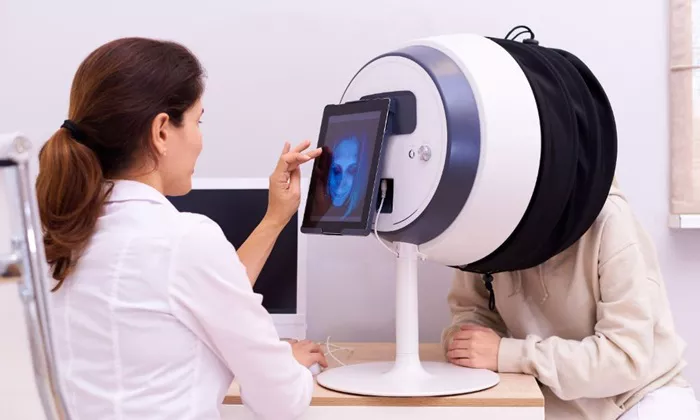In a groundbreaking development, a new AI-based glaucoma screening network could soon enable people to have their eyes tested for the disease at locations like supermarkets, train stations, and shopping malls—no appointment necessary. This innovation is poised to transform glaucoma detection, which is currently the leading cause of irreversible blindness worldwide.
Glaucoma progresses silently, causing gradual vision loss that often goes unnoticed until it has reached advanced stages. This delay in detection is especially problematic in regions with limited access to ophthalmologists, leaving many cases undiagnosed. Early detection is crucial for effective intervention, as the disease can cause permanent damage before patients even realize they are affected.
To address this challenge, a research team led by Professor Toru Nakazawa and Associate Professor Parmanand Sharma from Tohoku University developed the AI-based Glaucoma Screening (AI-GS) network. The system analyzes key indicators of glaucoma through a quick, portable test and provides highly accurate results with remarkable precision.
The AI-GS network was tested using a dataset of 8,000 fundus images, achieving an impressive 93.52% sensitivity and 95% specificity—comparable to expert ophthalmologists. The system is particularly effective at detecting early-stage glaucoma, even in cases where the damage to the eye is subtle and difficult to detect.
A significant hurdle in AI healthcare systems has been the lack of interpretability, often referred to as the “black box” problem. The AI-GS overcomes this by offering numerical values for each diagnostic feature, giving ophthalmologists insight into the AI’s decision-making process and enhancing trust in the technology.
In addition to its accuracy, the AI-GS is lightweight and efficient, with a size of just 110 MB. It requires minimal computational power and provides diagnostic results in under a second. This makes it ideal for deployment on mobile devices, allowing it to be used in public spaces like train stations, supermarkets, and even remote areas with limited access to specialists.
“This AI technology bridges a critical gap in glaucoma detection by making specialist-level diagnostics accessible to underserved communities,” said Professor Nakazawa. “By enabling early detection on a large scale, we have the potential to prevent blindness for millions worldwide.”
With its high accuracy, explainability, and portability, the AI-GS network marks a major breakthrough in the field of ophthalmology. Its potential for large-scale implementation could revolutionize glaucoma care, ensuring that more people receive timely diagnoses and treatment, regardless of their location or access to healthcare specialists.
Related topic:
Laser Eye Surgery with Insurance Costs: A Comprehensive Guide
6 Eye Surgeries for Severe Astigmatism: What Are Your Options?
4 Best Trifocal Cataract Lens: A Comprehensive Guide


